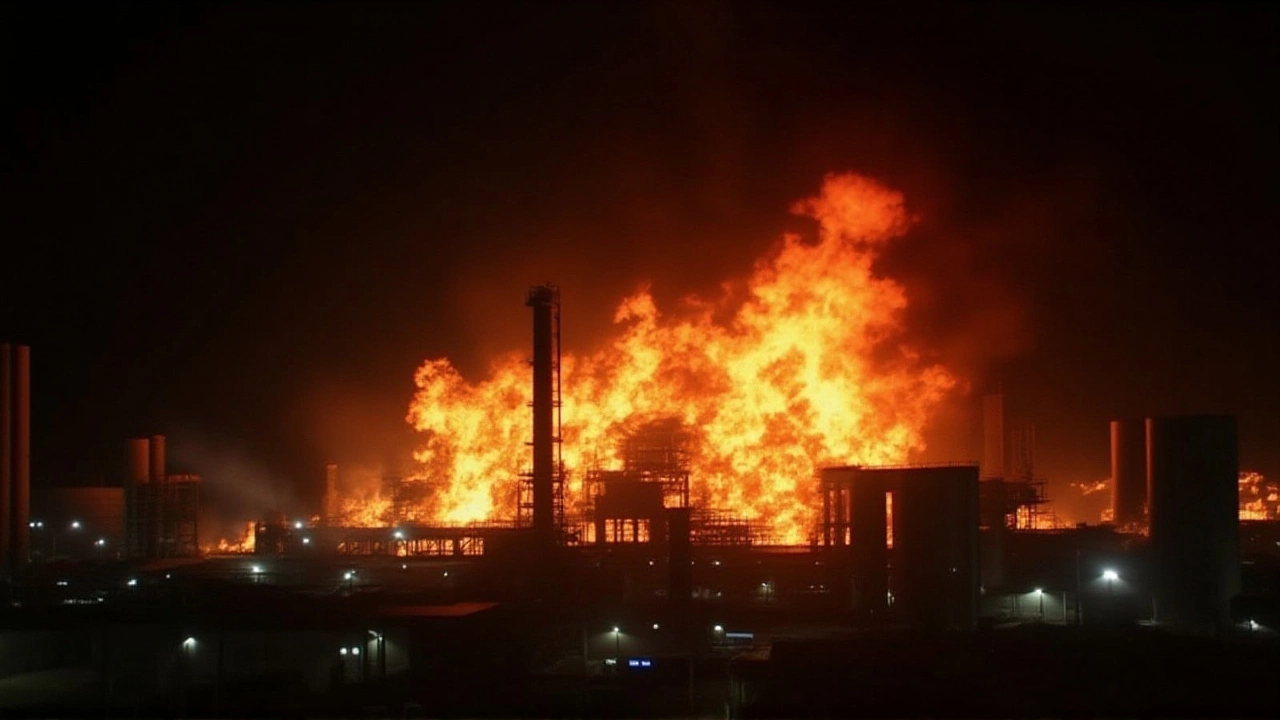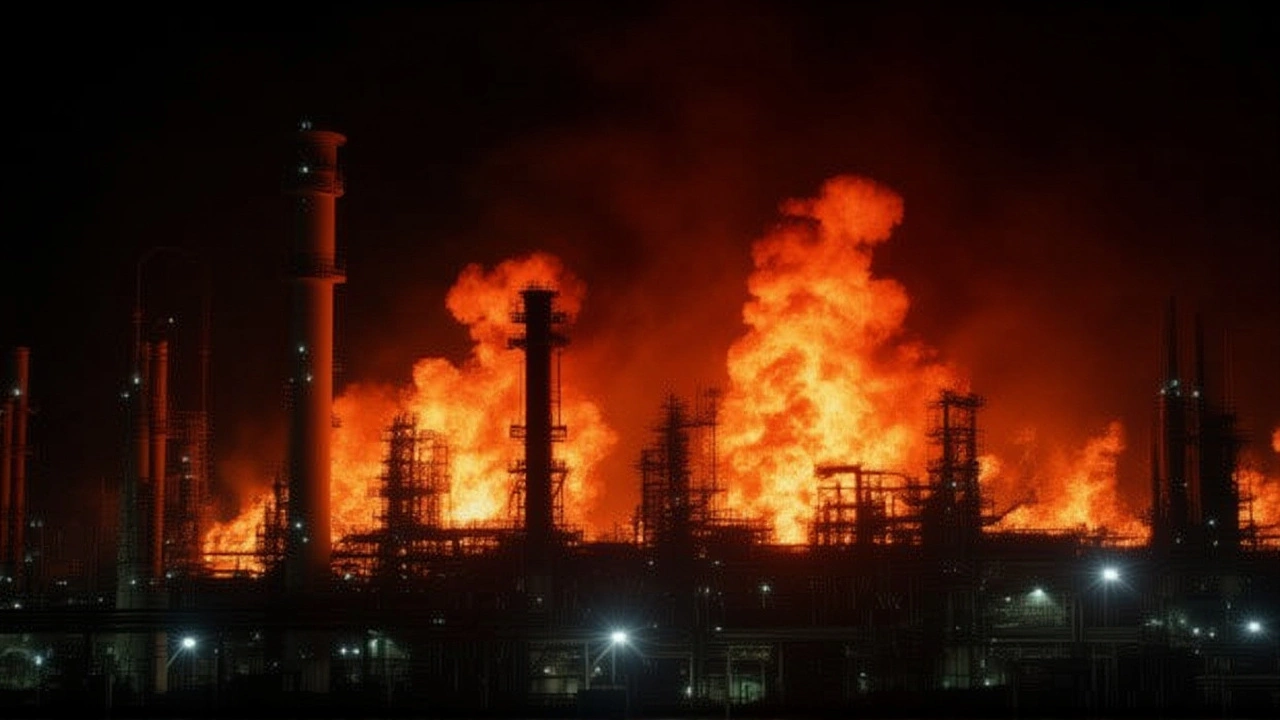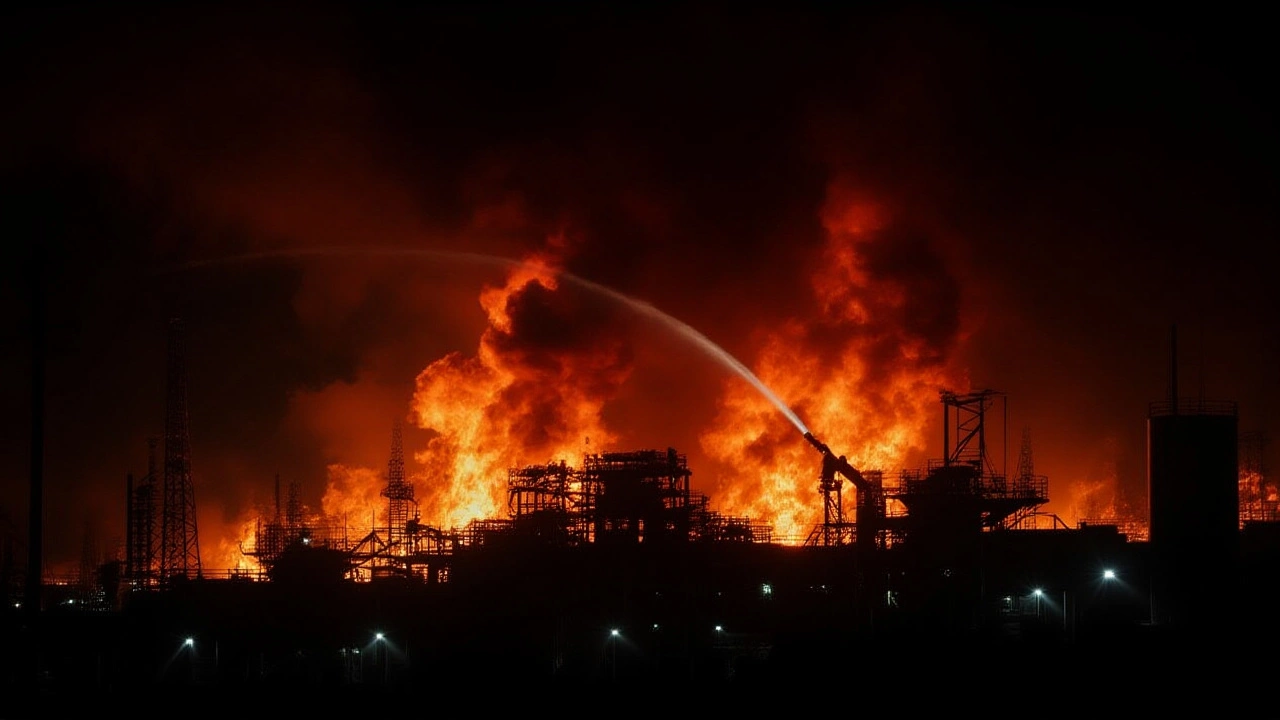When Chevron announced a massive fire at its El Segundo oil refinery on Thursday night, October 3, 2025, the news lit up more than just the night sky. The blaze, triggered by an explosion in one of eight production units, forced an emergency shutdown of the complex that supplies roughly 40% of jet fuel and 20% of motor fuels for Southern California. Ross Allen, Chevron’s spokesperson, warned that while no injuries were reported, the incident could push gasoline prices higher almost immediately.
What Happened and the Immediate Response
Firefighters arrived just after 10 p.m., battling flames that shot 80 feet into the night. By early Saturday, October 4, the fire was fully extinguished thanks to a rapid emergency shutdown protocol that isolates each production unit. Chevron’s control room cut power to the affected unit, effectively boxing the blaze. The company confirmed that the fire was confined to the hydrocracker section, a critical component for converting heavy crude into lighter fuels.
Local emergency services coordinated with Los Angeles County Fire Department and the U.S. Environmental Protection Agency to assess air quality. Preliminary readings showed a slight uptick in volatile organic compounds, but officials declared the surrounding neighborhoods safe for residents.
Why the El Segundo Facility Matters
The El Segundo refinery is one of only eight large‑scale refineries operating in California, and it accounts for a sizable slice of the state’s fuel pie. As Shawn Hyatt—a business professor at the University of Southern California—explained, “California’s refinery capacity has been shrinking for years. When a key plant like El Segundo goes offline, the ripple effects are felt across the entire West Coast.”
Historically, the refinery has operated at an average of 96% capacity, churning out roughly 200,000 barrels of gasoline per day. That output fuels over 5 million vehicles daily and keeps Los Angeles International Airport’s runways humming with jet traffic. The loss of even a single unit can shave off up to 15,000 barrels per day, a figure that translates into noticeable price pressure at the pump.
Economic Ripple Effects Across the West
Gasoline prices in Los Angeles County rose by 6 cents per gallon within two hours of the shutdown, according to the California Energy Commission’s real‑time tracker. By Friday morning, the average price in the Greater Los Angeles area hit $5.12 per gallon, up from $4.88 the previous day. In neighboring Nevada and Arizona, price hikes of 3–4 cents per gallon were reported, illustrating how interconnected the western fuel market is.
Industry analysts at Energy Insights Group project that if the refinery operates at reduced capacity for the full 2‑4 week repair window, gasoline could see a cumulative price increase of $0.30 to $0.45 per gallon in Southern California. Jet fuel, which has a tighter supply chain, may climb by $0.08 per gallon, potentially impacting airline ticket prices for the holiday travel season.
- El Segundo refinery supplies ~40% of Southern California’s jet fuel.
- Fire affected one of eight units, cutting output by ~7%.
- Gas prices rose 6¢/gal in LA within hours of the shutdown.
- Full recovery expected in 2‑4 weeks, per Chevron engineers.
- California’s overall refinery capacity down 12% from 2015 levels.

Expert Perspectives on California’s Refinery Landscape
Hyatt isn’t the only voice warning of systemic issues. Maria Gomez, senior policy analyst at the California Public Utilities Commission, said, “We’ve seen a wave of plants closing or converting to specialty chemicals. The state needs a long‑term strategy, not just emergency patches.”
She added that recent legislation, such as Senate Bill 1295, aims to incentivize refinery upgrades to meet stricter emissions standards, but the rollout may take a decade. In the meantime, experts suggest that importing refined products from the Gulf Coast could be a stop‑gap, though transportation costs add another layer of price pressure.
Investigation, Repairs, and What’s Next
An official investigation kicked off under the umbrella of the El Segundo Refinery Fire InvestigationEl Segundo, California. The probe involves the Los Angeles County Fire Department, the California Division of Oil, Gas, and Geothermal Resources (DOGGR), and the Federal Energy Regulatory Commission (FERC). Early findings point to a possible over‑pressurization of the hydrocracker unit, but officials caution that the final cause could involve multiple factors, ranging from equipment fatigue to human error.
Chevron has already ordered a replacement for the damaged heat exchanger, a component that typically takes six weeks to fabricate and install. Engineers estimate that the plant could resume full output by early November if all goes as planned. Meanwhile, the company is diverting feedstock to its nearby Portland, Oregon refinery to offset some of the shortfall.
Consumers can expect ongoing price volatility through the holiday travel rush, especially for air travelers relying on jet fuel. As the investigation unfolds, Chevron has pledged to keep the public informed via weekly briefings and a dedicated online dashboard tracking repair progress.
Broader Implications for Energy Policy
Beyond the immediate price spikes, the fire reignites the debate over California’s reliance on a handful of large refineries. Critics argue that the state’s “just‑in‑time” fuel model leaves it vulnerable to single‑point failures. Proponents of diversification point to the rise of biofuel plants in the Central Valley and the potential for battery‑electric vehicle adoption to reduce gasoline demand over the next decade.
Regardless of the path forward, the El Segundo incident serves as a stark reminder: when infrastructure falters, the everyday commuter feels the heat at the pump.

Frequently Asked Questions
How will the refinery fire affect airline ticket prices?
Jet fuel prices have already edged up $0.08 per gallon since the shutdown. Airlines typically pass roughly 60% of fuel cost changes onto passengers, so a modest ticket‑price increase of $5‑$10 is expected for flights originating in Southern California during the next two weeks.
What timeline is Chevron giving for full restoration?
Chevron engineers say the damaged heat exchanger will take about six weeks to fabricate, but the plant could be back to full capacity in as little as 2‑4 weeks if they can expedite installation and testing. A public dashboard will post weekly updates.
Are there environmental concerns from the fire?
Initial air‑monitoring showed a slight rise in volatile organic compounds, but levels stayed well below EPA health thresholds. Long‑term studies will examine any soil or groundwater impacts once the site is fully secured.
What does this incident mean for California’s energy policy?
The fire highlights the state’s over‑reliance on a few aging refineries. Policymakers are likely to accelerate plans for refinery upgrades, boost biofuel incentives, and consider strategic reserves to cushion future supply shocks.
Will drivers in other western states see higher gas prices?
Because the West Coast fuel market is tightly linked, Nevada and Arizona have already reported 3‑4 cent per‑gallon hikes. Prices could climb another 2‑3 cents if the refinery remains offline beyond four weeks.
